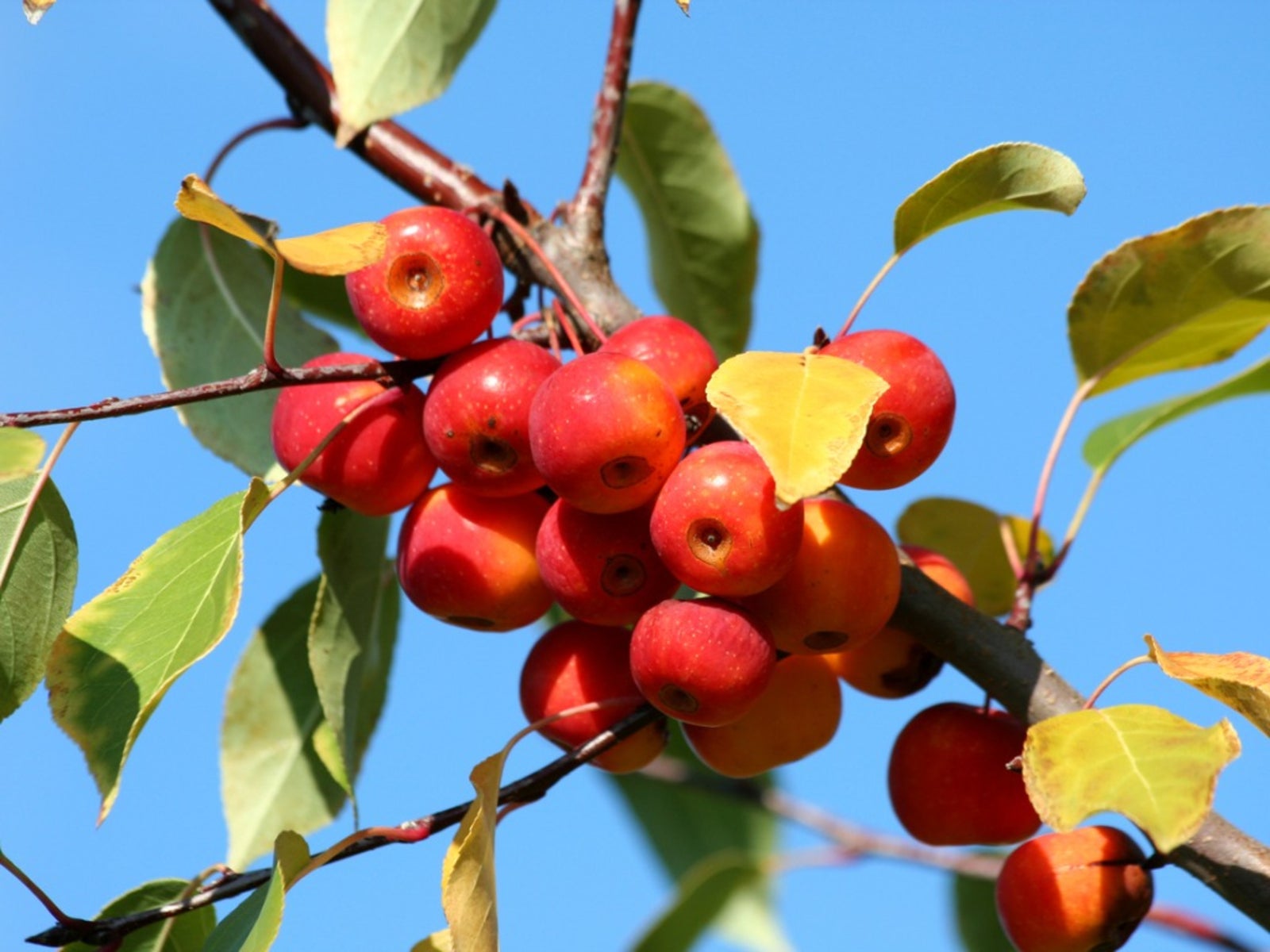Winesap Apple Tree Care – Learn How To Grow Winesap Apples


“Spicy and crisp with rich aftertaste” sounds like a description of a special wine, but these words are also used about Winesap apples. Growing a Winesap apple tree in the home orchard provides a ready supply of these luscious fruit with their complex sweet-sour taste, perfect for eating off the tree, baking, or juicing. If you would like to learn how easy backyard Winesap apple trees can be, read on. We’ll give you lots of information about Winesap apples plus tips on how to grow Winesap apples.
About Winesap Apples
Mixing sweet and tart flavors, the flavor of Winesap apples has many of the qualities of a fine wine, resulting in the common name of the tree. It originated in New Jersey over 200 years ago and has won the loyalty of many gardeners since. What makes Winesap apples so appealing? The fruit itself is a draw, delicious and crunchy, yet keeping well in storage up to six months. The apples are wonderful, but the tree has many attractive qualities as well. It grows on many soil types, including clay. It is immune to cedar apple rust, requires little maintenance, and produces a reliable harvest year after year. The tree is also ornamental. In the spring, Winesap apple trees provide a lacy show of white or soft pink blossoms. In the fall, when the apples ripen, their red color provides a striking contrast to the green canopy. That’s just about the time to start a harvest. You can find different progeny of Winesap apples, including the Stayman Winesap, Blacktwig, and Arkansas Black apple trees. Each has its own particular features that may work well for your orchard.
How to Grow Winesap Apples
If you are thinking of growing a Winesap apple tree, you’ll be happy to learn that the tree is not a picky prima donna. It’s a low-maintenance, easy-grow apple tree in its hardiness zone range, from USDA hardiness zones 5 through 8. You’ll need to plant Winesap apple trees in a location that gets six or more hours a day of direct, unfiltered sun. A proper site makes Winesap apple care even easier. Those already growing a Winesap apple tree say that a wide variety of soils will do just fine, from sand to clay. However, they do best in acidic, loamy, moist, and well-drained soil. One term that doesn’t apply to these trees is “drought resistant.” Provide regular irrigation for those juicy apples as part of your weekly Winesap apple care. You can find Winesap apple trees in regular, semi-dwarf, and dwarf forms. The taller the tree, the longer you have to wait for fruit production.
Gardening tips, videos, info and more delivered right to your inbox!
Sign up for the Gardening Know How newsletter today and receive a free copy of our e-book "How to Grow Delicious Tomatoes".

Teo Spengler is a master gardener and a docent at the San Francisco Botanical Garden, where she hosts public tours. She has studied horticulture and written about nature, trees, plants, and gardening for more than two decades. Her extended family includes some 30 houseplants and hundreds of outdoor plants, including 250 trees, which are her main passion. Spengler currently splits her life between San Francisco and the French Basque Country, though she was raised in Alaska, giving her experience of gardening in a range of climates.
-
 Looking For Plants To Give You The Soft And Fuzzies? Try These 5 Fuzzy Leaf Plant Options
Looking For Plants To Give You The Soft And Fuzzies? Try These 5 Fuzzy Leaf Plant OptionsLovers of texture, drama, silver foliage and tactile plants will adore these special sensory garden additions. These fuzzy leaf plant options will leave you all aglow
By Susan Albert
-
 Get Ready For A Summer Of Hummers! Grow These Full Sun Hummingbird Plants and Flowers
Get Ready For A Summer Of Hummers! Grow These Full Sun Hummingbird Plants and FlowersIf you’re lucky enough to enjoy a sunny backyard, make sure you are maxing out on your pollinator opportunities and grow these full sun hummingbird plants and flowers
By Tonya Barnett